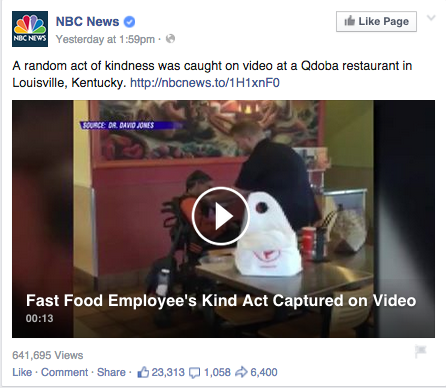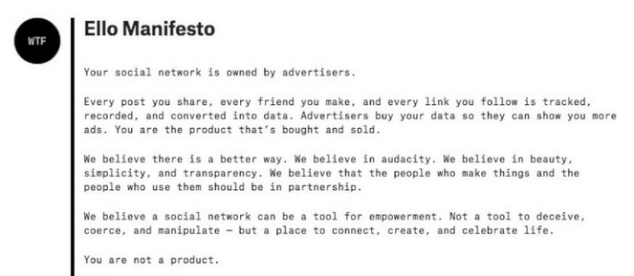The time was 3 a.m. The day was May 28th. The place was Times Square, New York. A historic moment was unfolding in the Big Apple as CBS was removing Letterman’s logo from the Ed Sullivan Theater marquee. The street nearby was lined with onlookers using their smartphones to capture the deconstruction and the remains. One of these fans was digital marketing consultant Geoff Golberg. He went over to the scene after being tipped off by a friend that the sign was going to be taken down. He recorded what he saw and then uploaded his footage to Meerkat.
While searching for news about Lettermen, Patty Barrett, an assignment editor from CBS in New York, got ahold of his video and asked for permission to use it on air. Even though CBS was only located a few blocks away, they didn’t happen to have anyone on the scene, so Golberg’s video not only informed them about this event but also provided them with an engaging visual for them to use.
Modern Day Storytellers and the Journalists Who Rely on Them
In today’s world, anyone can be a storyteller. All you need is to be in the right place at the right time with your smart phone handy. Thanks to social media, citizen journalism has begun to play a more important role in news reporting in today’s world. While journalists would love to be in several places at once so that they could cover every single story in their territory as it happens, that’s just not possible. Many times, they rely on user-generated content they come across on social media to inform them about what’s happening near them. While this information can prove to be extremely useful, it might leave journalists feeling overwhelmed, especially if they’re not sure if it’s true or don’t quite know how they should present it to their readers. Thankfully, this summer, Google has come to the rescue by releasing new tools, such as News Lab, YouTube Newswire, First Draft Coalition and Witness Media Lab, to help journalists navigate their way through user-generated content online so that they can use this information to aid in their storytelling efforts.
Google News Lab
In June, Google announced that it was launching News Lab, a site aimed at connecting journalists with programs, data and other resources to aid in their reporting. The site features a number of tools for newsrooms, including tutorials and best practices on how to use Google products in reporting. Journalists can develop their stories using Google’s research tools. Below, I’ve highlighted just a few.
- Google Reverse Image Search: helps you verify the accuracy of images you find online. Has this image been altered in any way shape or form? Google can help you get to the bottom of it.
- Google Public Data Explorer: helps aggregate datasets from trusted sources and gives you simple tools to create sophisticated visualizations. Many times, journalists know that they want to use data for a story they’re writing but just don’t know how. Google’s Public Data Explorer can help them strengthen their story.
- Google Alerts: allows you to set up custom alerts about the topics you’re most interested in so that you get notified when something happens right away
- Google News Archive: Google’s great at giving you the most recent and relevant stories about a particular topic, but did you know that you can also use it to search for historical articles? This tool is essential when trying to report on how a story unfolded over time.
News Lab is also home to a recently redesigned version of Google Trends that helps journalists get real-time data about anything and everything that’s going on. Find out what people are talking about online and discover how you can give it your own spin to stand out.

Numbers can often be overwhelming for journalists and their readers. That’s why it’s so important that they learn to utilize the power of this data to tell an engaging and socially shareable story.
Both Mashable and The Huffington Post have already utilized Google Trends to tell more effective stories using data.
In April, Mashable partnered with Google to publish a Google Trends map highlighting searches for “Nepal” and “help” in various languages during the first 48 hours after their devastating earthquake to illustrate the global efforts to help the area in need.
After the South Carolina shooting a few months back, The Huffington Post used Google Trends to look for the top questions asked around the events to further its analysis by answering them and providing more context.
YouTube Newswire
Also in June, YouTube, which is owned by Google, and Storyful announced that they were joining forces to launch YouTube Newswire. This channel serves as a resource for journalists looking for user-generated videos from around the world by highlighting newsworthy videos uploaded to YouTube that have been verified by Storyful. In today’s world run by citizen journalists, there’s a plethora of eyewitness videos and other user-generated content out there for the picking, but how do you know which ones are legitimate and accurate? That’s where Storyful comes in. It wants to help “journalists find stories worth telling amid the noise of social,” said Mark Little, Storyful’s founder and director of Innovation.
Just to give you an idea of how YouTube has evolved as a storytelling tool over the last four years, when Storyful and YouTube first began working together in 2011, 48 hours of videos were uploaded to the platform every minute. Now that number has reached 300 hours. It seems that Newswire has come at the perfect time then.
But Storyful’s role in Newswire is about more than just making it easy for journalists to get access to numerous, attention-grabbing eyewitness videos about a trending topic; rather, the organization’s value lies more so in the fact that it’s verifying the content that gets uploaded, making them “safe” for reporters who are trying to cover a story as accurately as possible while still trying to meet their deadline. The Storyful team has made sure that every video on YouTube Newswire goes through an extensive verification process that ensures the date, location and source are correctly identified. That, right there, is a HUGE help to journalists.
First Draft Coalition & Witness Media Lab
Along with Newswire, YouTube announced another new service called First Draft Coalition, which will provide journalists with practical and ethical advice and guidance for handling eyewitness media. Ethics and journalism go hand in hand…at least, they should. Knowing which content is OK to publish and which is questionable is key to being an ethical reporter in today’s world.
This summer, Google also launched the WITNESS Media Lab in partnership with WITNESS, a non-profit group that trains non-journalists in how to report on injustice and human-rights violations around the world. For its first two months, the lab is examining the impact of video in documenting police misconduct in the U.S. and its role in achieving justice and accountability. It is also developing a series of solutions to ensure that footage taken by average citizens can serve as an effective tool for justice.
The Future
Google’s ability to recognize when it needs to step in to fill the gap has served as a huge help to today’s journalists. With social media, and the web as a whole, being filled with a constant stream of user-generated content, it’s important that journalists know what content they should be using and which tools they should be relying on for assistance. Thankfully, Google has made this all possible. I don’t think there’s anyone else out there that can look out for journalists as well as Google can. Do you?
*Created using makeameme.org
























